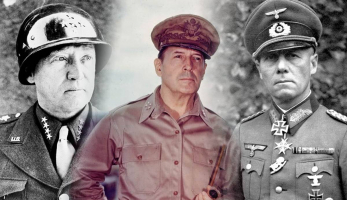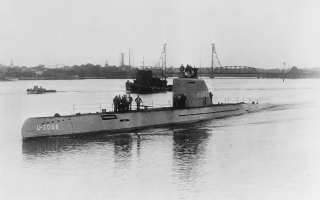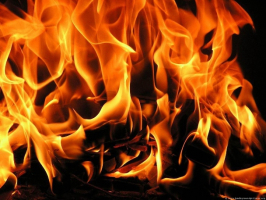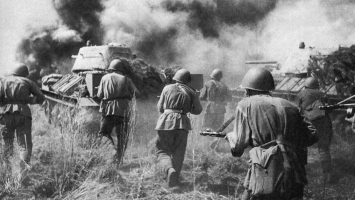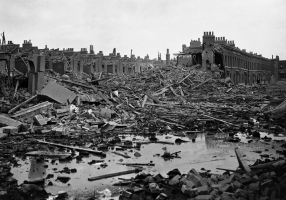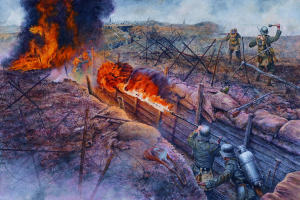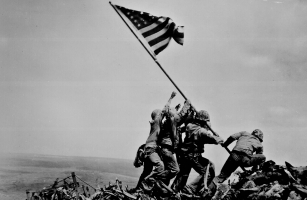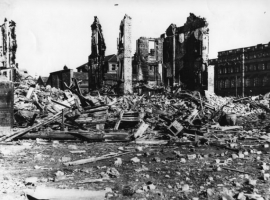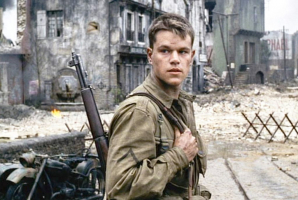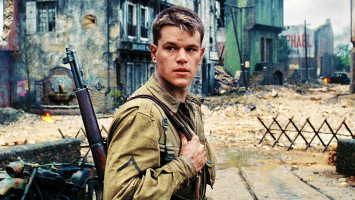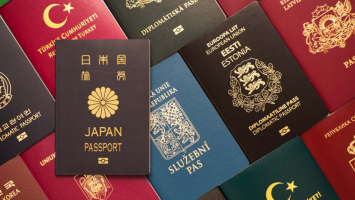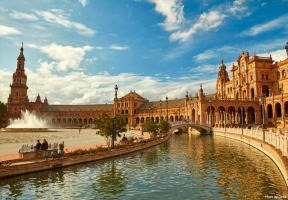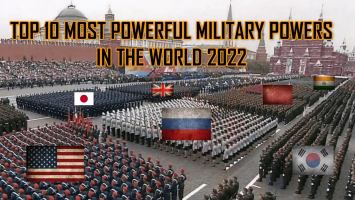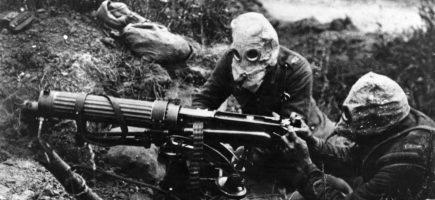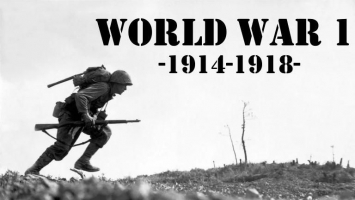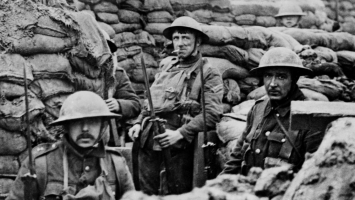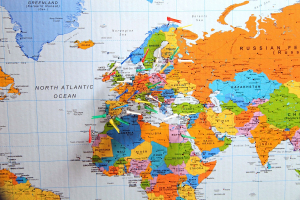Top 10 Most Powerful Countries in World War II
World War II has passed, but the effects it left behind are still great, especially the development of the world's most powerful powers that have shaped global ... read more...economic models, maintained a powerful military, and established foreign policies that had a resounding global impact. Here is a list of the most powerful countries in World War II that we have compiled.
-
In World War 2, the Soviet Union was one of the dominant Allied nations. Due to its communist structure, the nation possessed a sizable army and could mobilize swiftly. Due to industrialization under Stalin's leadership, it had a sizable economy. Massive amounts of weaponry and other supplies were created on the land, aiding the war effort. Following Germany's invasion on June 22, 1941, the Soviet Union entered the conflict. In Europe, it engaged in combat with Nazi Germany and its allies. Their military's power was derived from its sizable army and tank force. The Soviet army had access to millions of T-34 tanks, which were among the most potent combat vehicles.
They were also in charge of building the Red Army, which was crucial in overthrowing the Germans. The army of the nation murdered or injured approximately 20 million Germans, suffering severe casualties. More than 25,000 artillery pieces, 20,000 tanks, and about 11,000 fighter aircraft were in the nation's arsenal. A significant foe was the Soviet air force. It was quite effective and precise when bombing Japanese objectives.
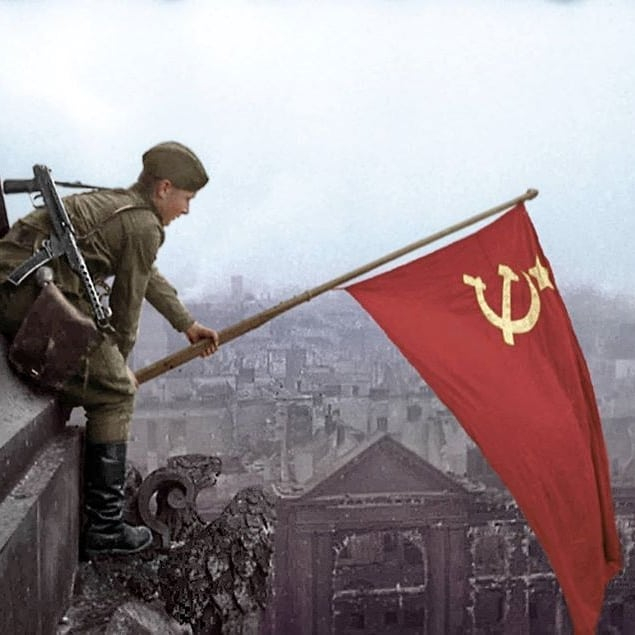
The Soviet Union in WW2 - twitter.com 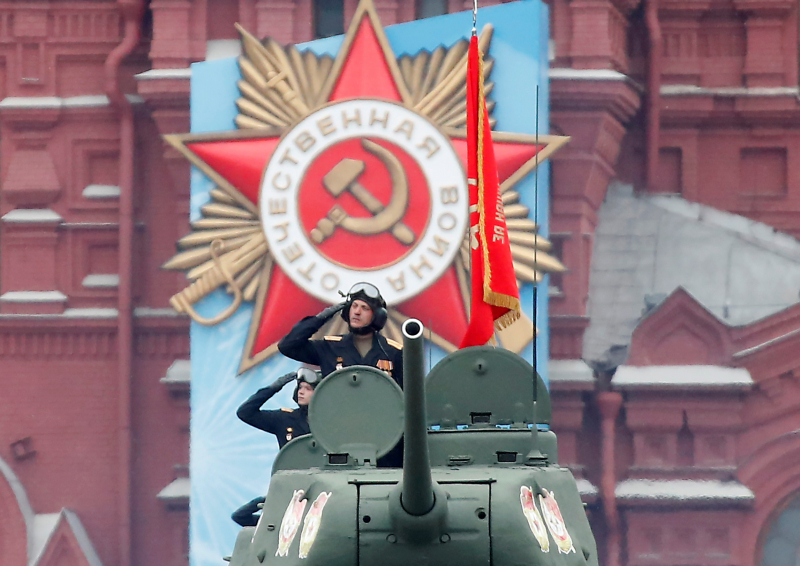
www.sundayguardianlive.com -
The United States was one of the major players in World War 2, significantly contributing to the success of the Allies. While its agricultural sector could feed the military populace, its manufacturing sector could generate large quantities of weapons and other supplies. Following the Japanese attack on Pearl Harbor on December 7, 1941, the nation entered the war. About 16 million Americans served in the military throughout the conflict. They engaged in combat with Nazi Germany, Italy, and Japan in both Europe and Asia. The US made a significant contribution to the war effort by supplying weapons and other supplies.
More than two-thirds of all Allied aircraft throughout the war were built at the nation's factories. They possessed 1,200 navy vessels, including more than 100 carriers, and around 320,000 aircraft. The world's most devastating force was once a very weak power that became stronger through time. Whether it was using high explosives to destroy Panzer Lehr, destroying Tokyo with fire, or destroying vital German industrial infrastructure, it was a powerful force. Japan was defeated thanks only to the efforts of the United States.
The two main Axis Powers were outwitted by them in every aspect of the war that had led to so many of their early wins over Germany and Japan (armored mobile warfare, close air support, air supremacy, naval aviation, submarine warfare, and amphibious warfare). The Allies' victory was largely attributed to advancements in radar, anti-submarine technology, and anti-aircraft gunnery, particularly the proximity fuse. The US was able to produce tanks, aircraft, and other military weaponry at a record-breaking rate because of industrial mass manufacturing techniques. Japan, on the other hand, eventually submitted unconditionally as a result of its nuclear arsenal.
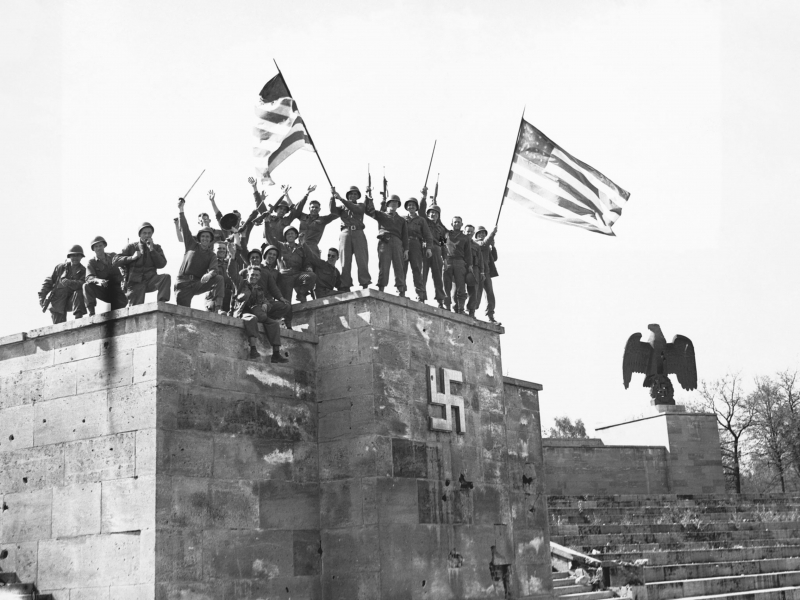
The USA in WW2 - www.thoughtco.com 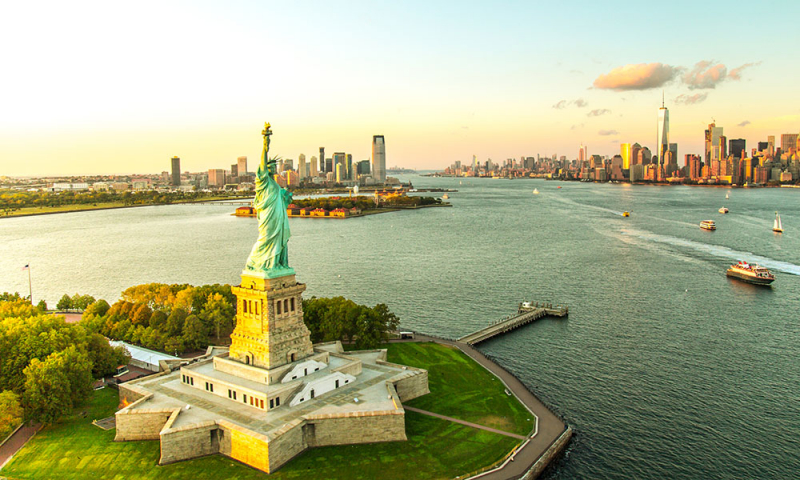
www.driveaway.com.au -
One of the most powerful and destructive governments in global history was the Nazi regime in Germany. The Nazis, led by Adolf Hitler, came to power in 1933 and immediately started carrying out their expansionist and racial purity goals. Due to its extensive planning and growth, the nation kept a powerful military. Its economy was sizable as well, but not as sizable as that of the US or the USSR. In the early stages of the conflict, Germany was able to defeat the majority of its foes. It ruled over a large portion of Europe, including Poland and France. Tanks and artillery made up the bulk of the nation's military arsenal.
German artillery was able to accurately pound opposing positions, and the Panzer tank was one of the most feared weapons on the battlefield. A serious foe was the German air force or Luftwaffe. It was effective and precise in its bombing of Allied targets. However, the air battle over Europe was ultimately won by the Allies. Germany posed a danger to the Allied troops despite its military setbacks until its capitulation in 1945. The nation had more than 12,000 pieces of artillery, almost 23,000 tanks, and close to 900 fighter aircraft in its arsenal.
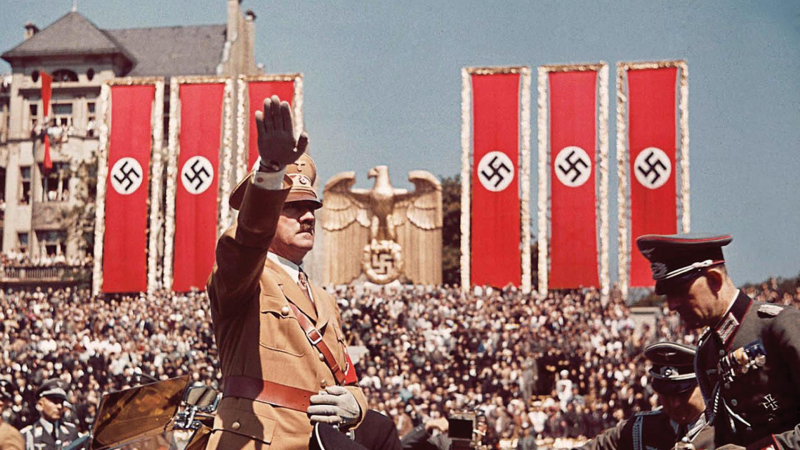
Germany in WW2 -mwww.nationalgeographic.com 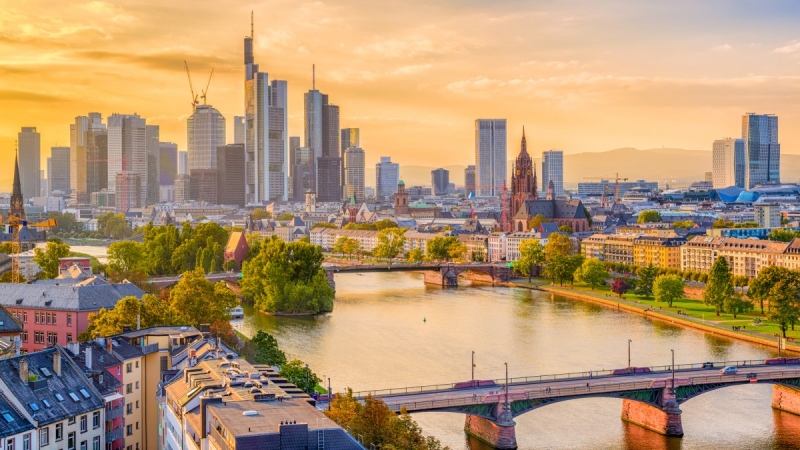
www.schengenvisainfo.com -
During World War 2, the Japanese Empire was one of the primary players. Its military was big and effective. In the early stages of the conflict, Japan was able to defeat the majority of its foes. On December 7, 1941, the Japanese army launched a surprise assault on Pearl Harbor, bringing the United States to its knees. As its empire grew, Japan conquered nations like Singapore, Malaya, and the Philippines in East Asia. The nation's aviation and naval forces were its greatest military assets.
One of the biggest and most potent navies in the world was the IJN or Imperial Japanese Navy. It can carry out deadly assaults against Allied objectives. The Imperial Japanese Army, usually known as the Japanese army, was a powerful foe. It can carry out deadly assaults against Allied objectives. However, the Allies ultimately defeated it in the Pacific Theater. Up until its capitulation in 1945, Japan posed a danger to the Allied troops despite its military setbacks. The nation had more than 11,000 pieces of artillery, almost 20,000 tanks, and close to 900 fighter aircraft in its arsenal.
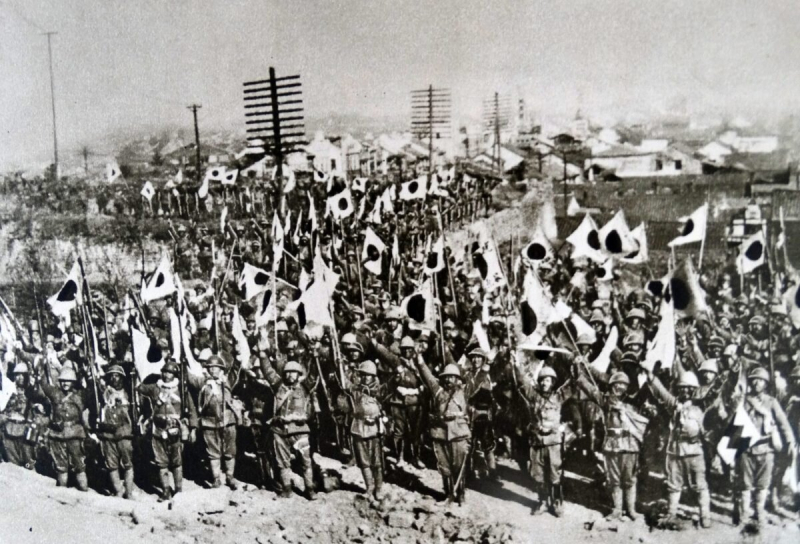
Japan in WW2 - asiatimes.com 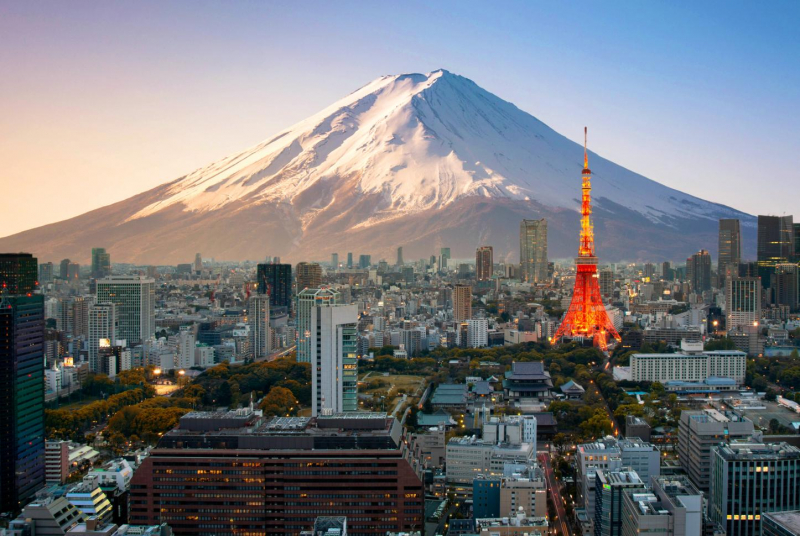
www.commonwealthfund.org -
One of the main players in World War 2 and a crucial ally of the Allies was the United Kingdom. The nation possessed a sizable naval and air force, and its army participated in World War 1 combat. Britain's expansive colonial empire served as a major economic driver. After Germany invaded Poland on September 1, 1939, they entered the conflict. It fought against Japan in Asia and Nazi Germany in Europe. They participated in and made a considerable contribution to both the European and Pacific theaters of the war against the Axis.
They were also the ones that resisted Germany for six years, despite the possibility of suffering personal setbacks and even at the peril of their empire. The Special Operations Executive (SOE), a covert group that engaged in sabotage and guerilla warfare against the Axis countries, was also founded by the UK. The military of the nation killed or injured nearly 300,000 German soldiers, suffering severe casualties. The German infrastructure was also severely bombed in Dresden by the British air force.
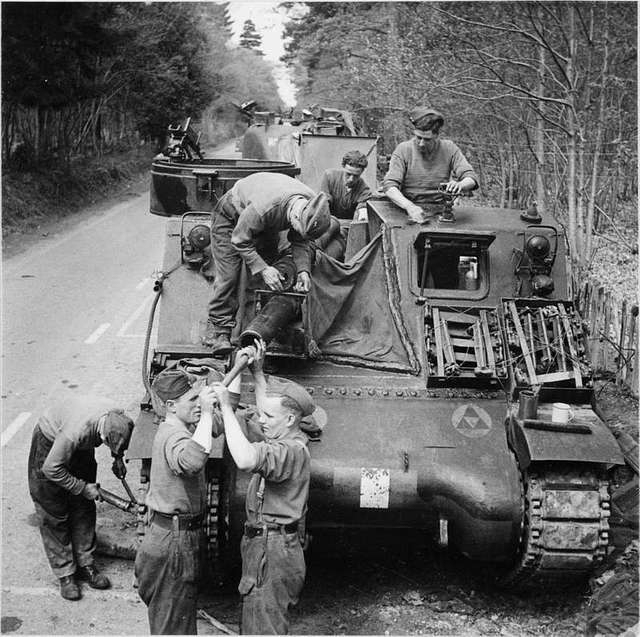
The United Kingdom in WW2 - picryl.com 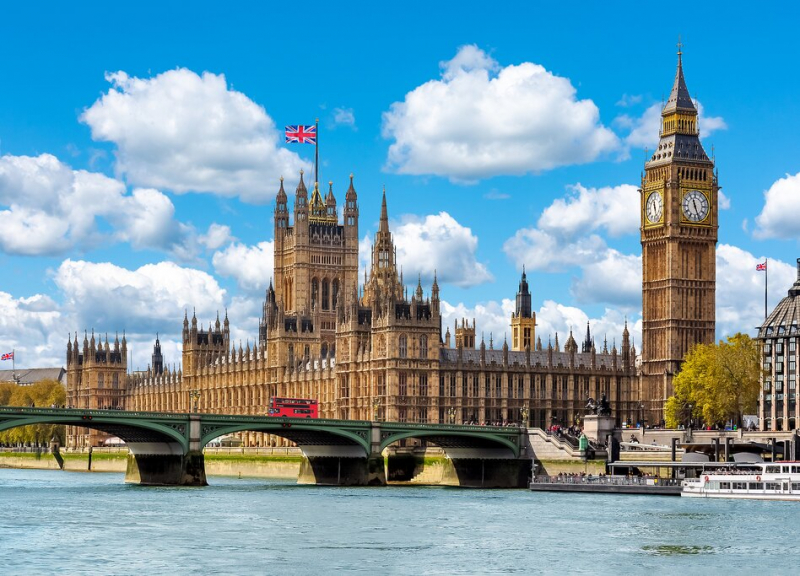
www.kimkim.com -
China, the world's most populous nation at the time, had a tremendous impact on World War 2. Since 1927, the Chinese Communist Party (CCP), under the leadership of Mao Zedong, has been engaged in a protracted civil war with the Chiang Kai-Nationalist sheik's party. In 1937, the two sides ultimately agreed to a cease-fire and join forces to combat the Japanese. Despite being huge, the Chinese military lacked training and was ill-equipped. It did, however, put up a fierce fight against the Japanese troops. With more than 20 million men and women fighting in the military or working as civilians in the production industry, the Chinese people mobilized as well to help the war effort.
Several crucial industrial sites that produced weapons and other supplies for the Allied forces were also located in China. For instance, the Chengdu Arsenal Aircraft Factory produced more than 11,000 aircraft throughout the conflict. Over 35 million people died or were injured in the country throughout the conflict, resulting in significant fatalities. But its contribution helped shift the balance against Japan, which ultimately led to their defeat.
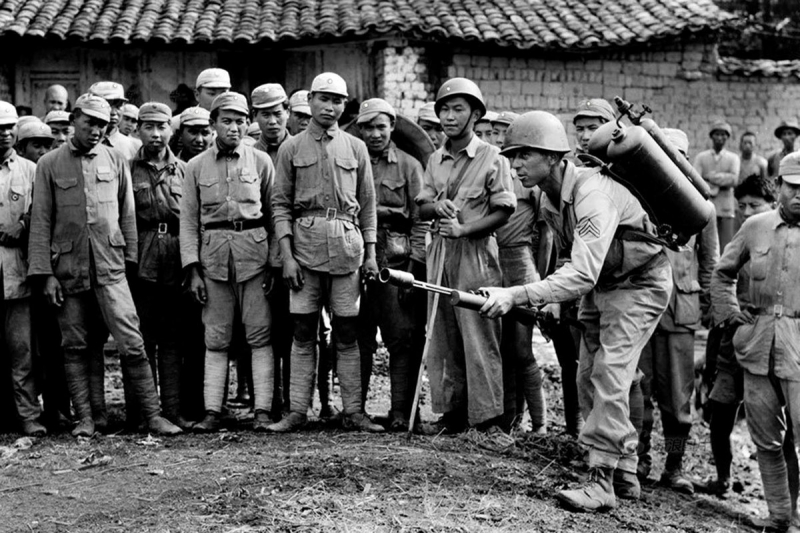
China Troops During WW2 - twitter.com 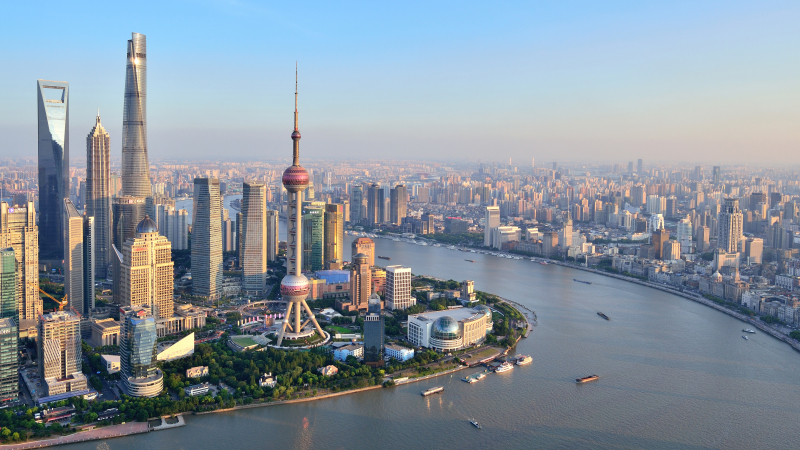
theculturetrip.com -
Germany was still a strong nation even after it invaded France in 1940 and eventually lost to the Axis forces. France was one of the most powerful nations in the war with over 40 million citizens and a specialized military force in World War 2. The French army has experience fighting in World War 1. However, they lacked tanks and other contemporary weaponry and were ill-equipped. Additionally, the French air force was tiny and inefficient. The Allies had freed France by 1944.
Its army took part in the liberation of Paris and thereafter marched alongside the Allies as they pursued Germany across Europe. Over 300,000 German soldiers were killed or injured as a result of significant casualties caused by the French forces. Louis de Broglie, a well-known nuclear physicist, had a significant influence on France's progress.
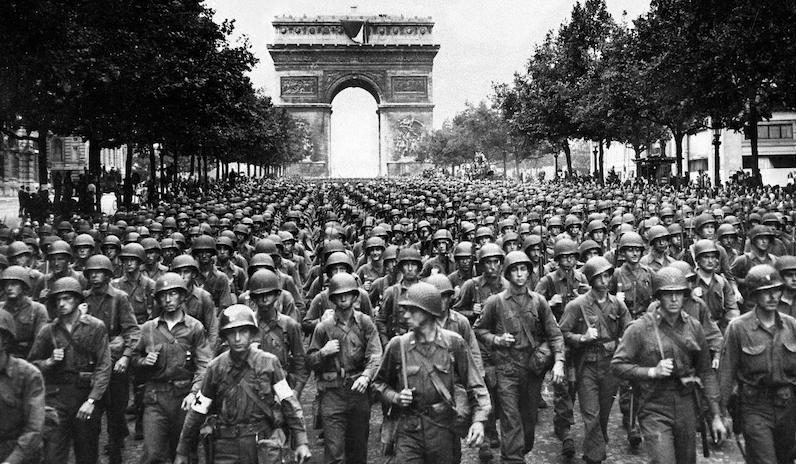
France in WW2 - lithub.com 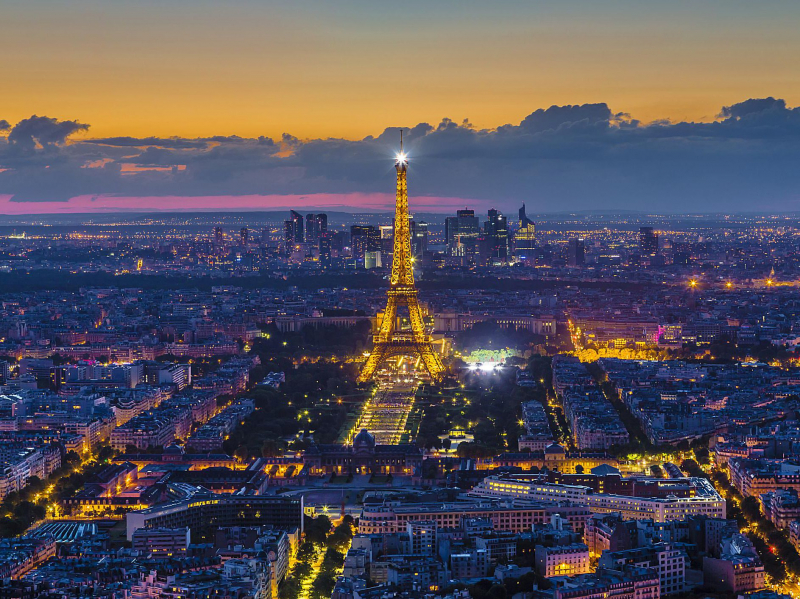
www.thoughtco.com -
Italy, one of the most powerful countries in World War II at the time, was the first nation to join the Axis forces during World War 2. In 1940, Italy had a population of 41 million and one of the largest armed forces in Europe. Over 600,000 men and over 900 ships made up its navy. Due to its strong industrial foundation, Italy was also able to develop massive weaponry and ammunition. Italy joined the Axis Powers in 1939 and was involved in the conflict.
It first concentrated on assaulting British soldiers in North Africa but eventually took involved in wars in Russia, Greece, and Yugoslavia. Italian soldiers initially prevailed in the operations in North Africa and Greece, but the Allies finally overcame them. After being overrun by Allied forces in September 1943, they submitted to the Allies.
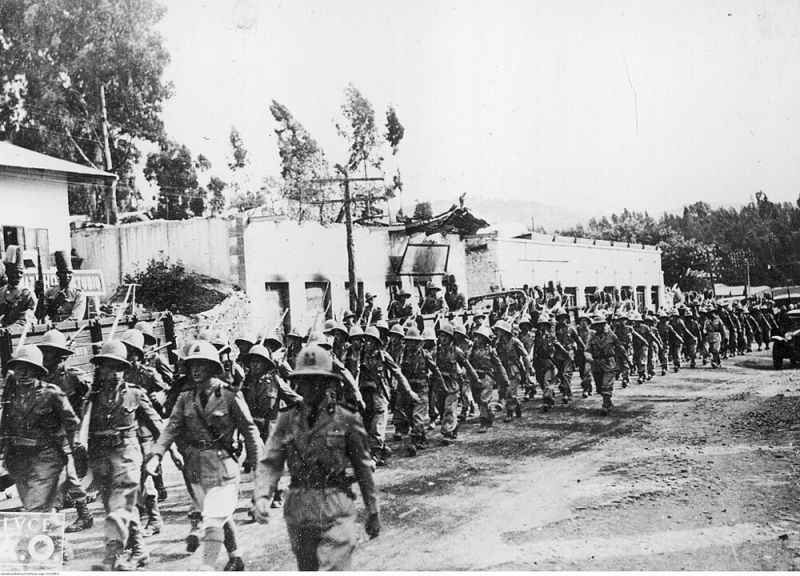
Italy in WW2 - commons.wikimedia.org 
www.state.gov -
One of the first nations to attack Germany during World War 2 was Poland. Nazi troops crossed the border into Poland in 1939 and started a terror campaign against the populace. However, the Germans were vigorously repelled by the Polish resistance, who suffered heavy losses. With over 260,000 members at its peak, the Polish Home Army (AK) was one of the most significant clandestine armies in Europe.
Despite being vastly outnumbered and outgunned, the AK was able to battle the Germans to a standstill while suffering significant losses. Polish cavalry forces were well-known in the early phases of the conflict. The cavalry was shown to be useless against contemporary artillery and tanks. The Allied invasion of Normandy, Operation Overlord, also benefited greatly from the contributions of the Polish resistance.
The AK helped facilitate the successful charge by smuggling supplies and guns onto the beaches and undermining German fortifications. Despite Poland's heroic efforts, the Germans finally won the war and occupied it for its entire duration. The Polish resistance, however, will go down in history as one of the most valiant.
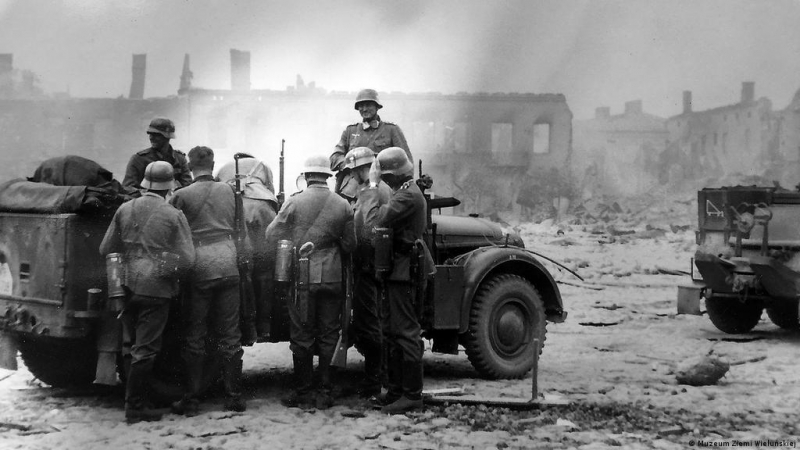
Poland in WW2 - www.dw.com 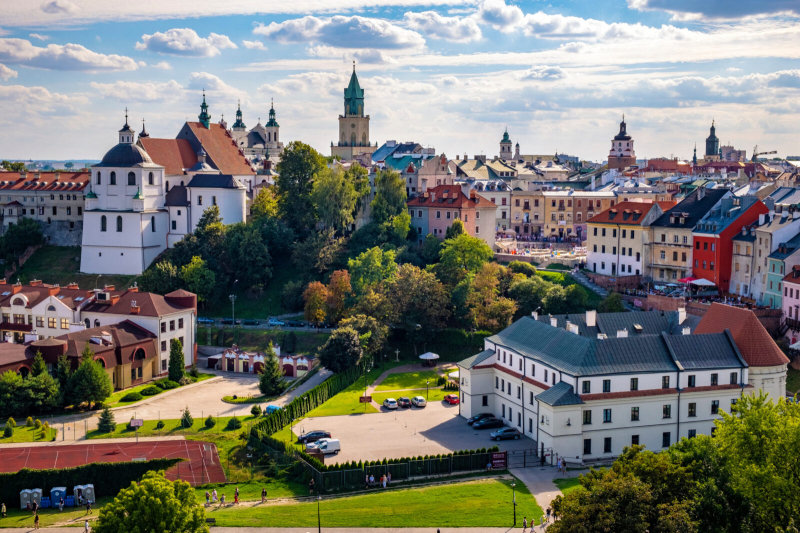
neweasterneurope.eu -
In World War 2, Canada was a strong Allied power and contributed significantly to the war effort. They possessed a sizable military force of more than 600,000 trained men who helped the Allies win some of their most significant victories. Canada played a key part in the liberation of Europe from Nazi rule during the Battle of Normandy. The first troops to arrive on the beaches were Canadian, and they battled valiantly against the Germans the whole fight.
In addition to the liberation of Paris and the invasion of Germany, Canadian troops took part in other significant European operations. In the Battle of the Atlantic, where they aided in defending Allied ships from German U-boats, they also had a significant impact. The Canadian government was crucial in the development of new technologies and weaponry during World War 2.
Canadian scientists developed an in 1943 that was utilized to make tires for military vehicles. The same year, Canadian scientists developed a radar technology to aid Allied planes in spotting hostile aircraft. The nation contributed significantly to the Allied war effort by providing food and other resources. For instance, more than 20% of the food that was delivered to Britain during the war was produced in Canada. Canada also significantly aided the Allied effort diplomatically and economically.
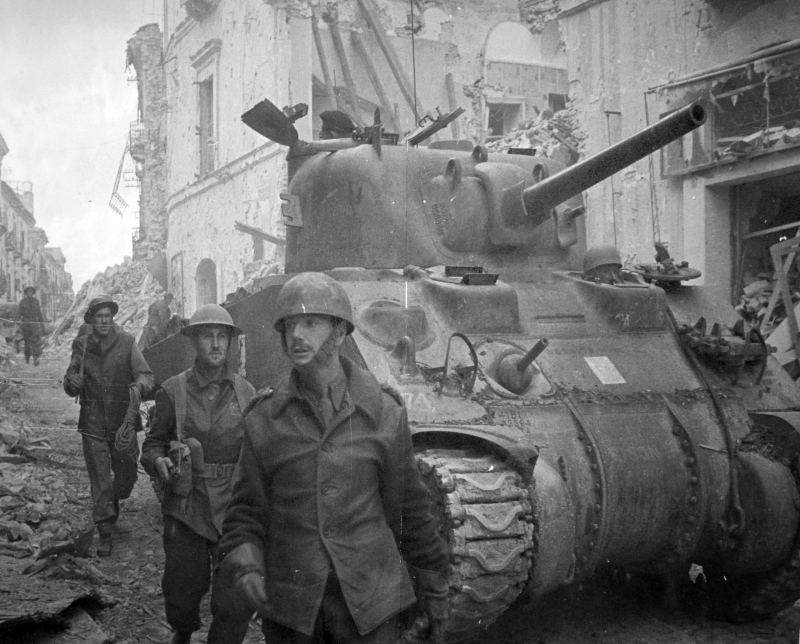
Canadian in WW2 - www.theglobeandmail.com 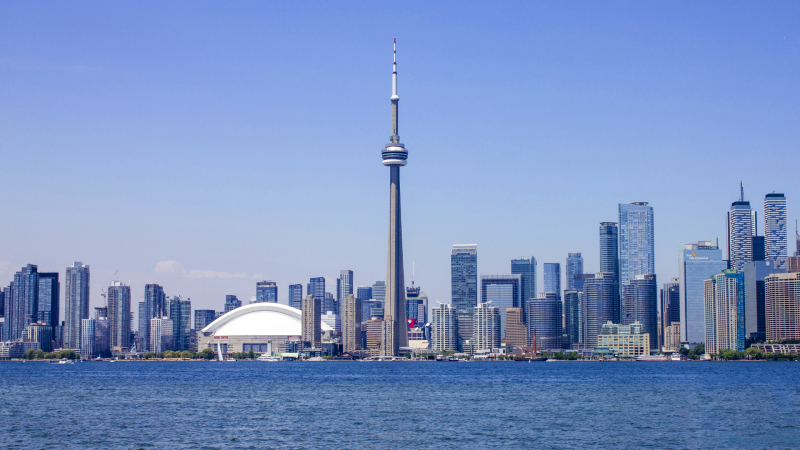
tinhte.vn













